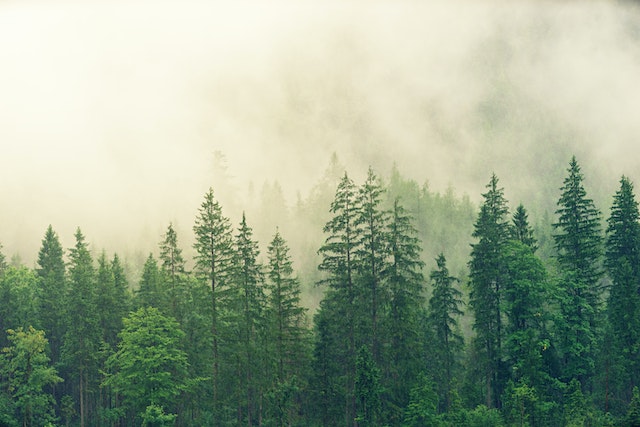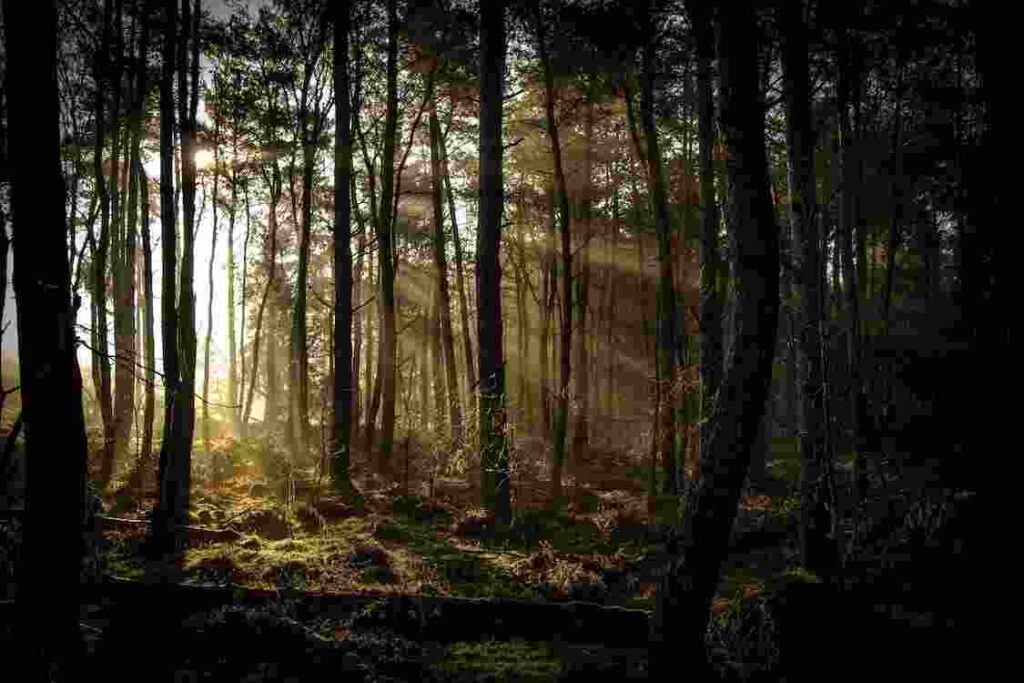In trying to establish the difference between woods and forests, there are a few things to consider, but we will have to start with the main factor that differentiates these two. The main difference between woods and forests is the rate of canopy cover and the tree density.
In a forest, there is a thicker canopy cover because the forest has more trees covering larger amounts of land. In contrast, in the woods, you will see a sparser density of trees. This makes the woods have a more open canopy that ultimately provides less shade and drier land.
Furthermore, these two concepts are different in terms of ecosystems, and they are home to different kinds of wild animals.
If we want to have a historical understanding of the difference between a forest and woods, it will take us back to the Middle Ages or Dark Ages when forests were used for royal hunting.
Without further ado, we will dive into this topic properly. We will discuss these two concepts separately to provide a proper explanation of what forests and woods are all about.
We will differentiate the two using information provided by the UN Food and Agricultural Organization (FAO) and the U.S. National Vegetation Classification system.
What Is a Forest?

According to the Food and Agriculture Organization (FAO), a forest is a place with trees that are at least 5 meters tall, meaning that a forest should contain trees that are over 16 feet. These trees should cover an area of land that is not less than 0.5 hectares and provide a canopy cover of not less than 10%.
In a forest, you should also find younger trees that are about 5 meters tall and also provide a canopy cover of not less than 10%.
Furthermore, the forest is known to be home to different kinds of animals. Some of the species you can find in a forest include birds, amphibians, and mammals.
Note that a forest should not include land that has always been used for farming or general agricultural purposes.
According to the U.S. National Vegetation Classification system, a forest is a place with trees that provide a closed canopy—these trees have a height of at least 6 meters and provide a cover of 60%–100%.
Types of Forest Biomes
Forests are composed of tree biomes, and they are:
Temperate Forests
Temperate forests have four distinct seasons in a year, and the temperatures in these forests vary at different times and seasons of the year.
Due to the nature of temperate forests, you will find various kinds of animals that can adapt to the different temperatures in this type of forest. Some of the animals you can find in a temperate forest include deer, raccoons, wolves, squirrels, and hibernating bears.
Tropical Forests
Tropical forests have warmer and more humid temperatures. These kinds of forests can only be found in places that are very close to the equator.
In this type of forest, you will find animals like poisonous frogs, jaguars, and gorillas. This is due to the high amount of rainfall in places where tropical forests are located. The tropical rainforests provide enough trees and a thick canopy to create a dark and secure environment for the aforementioned animals to thrive.
Boreal Forests
These are types of forests that have very cold temperatures. Siberia and Alaska are a couple of places where you can easily find forests like these.
This type of forest helps significantly with carbon capture. Its temperature makes it possible for animals like moose, reindeer, arctic hares, and polar bears to thrive in it.
Also Read: 10 Major Causes of Climate Change
What Is a Wood?

According to the FAO, land covered with trees of 5 meters and above spanning across 0.5 hectares and providing a canopy of 5-10 percent is considered to be woodland. This implies that woods provide a canopy of no more than 10%; otherwise, it would be considered a forest. This canopy cover may be provided by shrubs, trees, and bushes.
According to information provided by the U.S. National Vegetation Classification standards, woodland has a more open canopy of about 5-60 percent canopy cover, primarily provided by the domination of trees. If the canopy cover is above this percentage, it will be considered a forest.
In North America, stands of trees that existed before the year 1600 are called “old-growth forests,” while in the UK they are called “ancient woodlands.” The terminology depends on where you are located.
Australians consider vegetation of trees with a canopy cover of 10-30 percent to be woodland. They distinguish between tall and low woods, with trees over 98 feet and trees under 30 feet, respectively.
According to an article on Treehugger.com, woods have a more open canopy while forests have a more closed canopy cover, making woods a suitable place for animals that live on the ground and forests suitable for animals that live particularly among the trees.

Leave a Reply